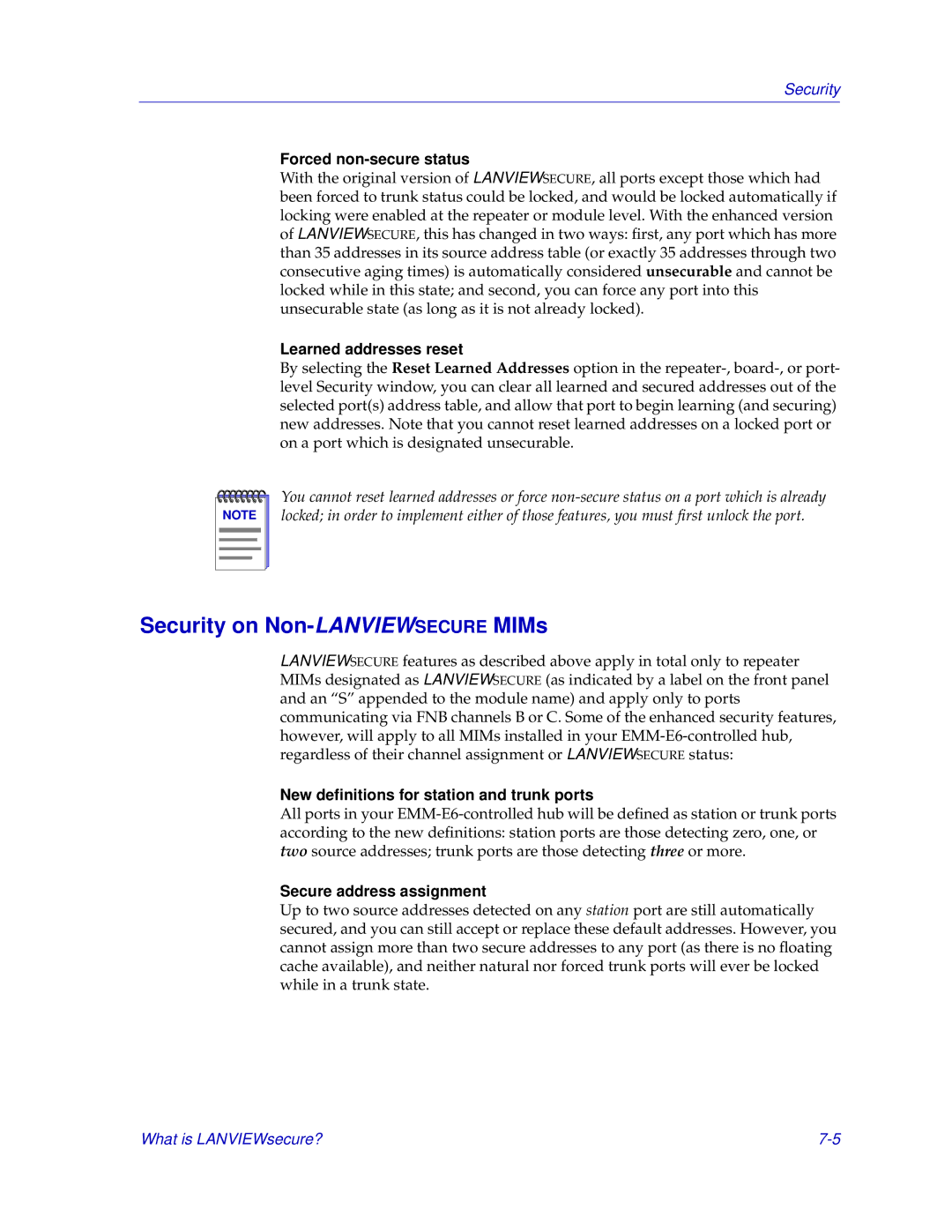
Security
Forced non-secure status
With the original version of LANVIEWSECURE, all ports except those which had been forced to trunk status could be locked, and would be locked automatically if locking were enabled at the repeater or module level. With the enhanced version of LANVIEWSECURE, this has changed in two ways: first, any port which has more than 35 addresses in its source address table (or exactly 35 addresses through two consecutive aging times) is automatically considered unsecurable and cannot be locked while in this state; and second, you can force any port into this unsecurable state (as long as it is not already locked).
Learned addresses reset
By selecting the Reset Learned Addresses option in the
NOTE |
You cannot reset learned addresses or force
Security on Non-LANVIEWSECURE MIMs
LANVIEWSECURE features as described above apply in total only to repeater MIMs designated as LANVIEWSECURE (as indicated by a label on the front panel and an “S” appended to the module name) and apply only to ports communicating via FNB channels B or C. Some of the enhanced security features, however, will apply to all MIMs installed in your
New definitions for station and trunk ports
All ports in your
Secure address assignment
Up to two source addresses detected on any station port are still automatically secured, and you can still accept or replace these default addresses. However, you cannot assign more than two secure addresses to any port (as there is no floating cache available), and neither natural nor forced trunk ports will ever be locked while in a trunk state.
What is LANVIEWsecure? |
